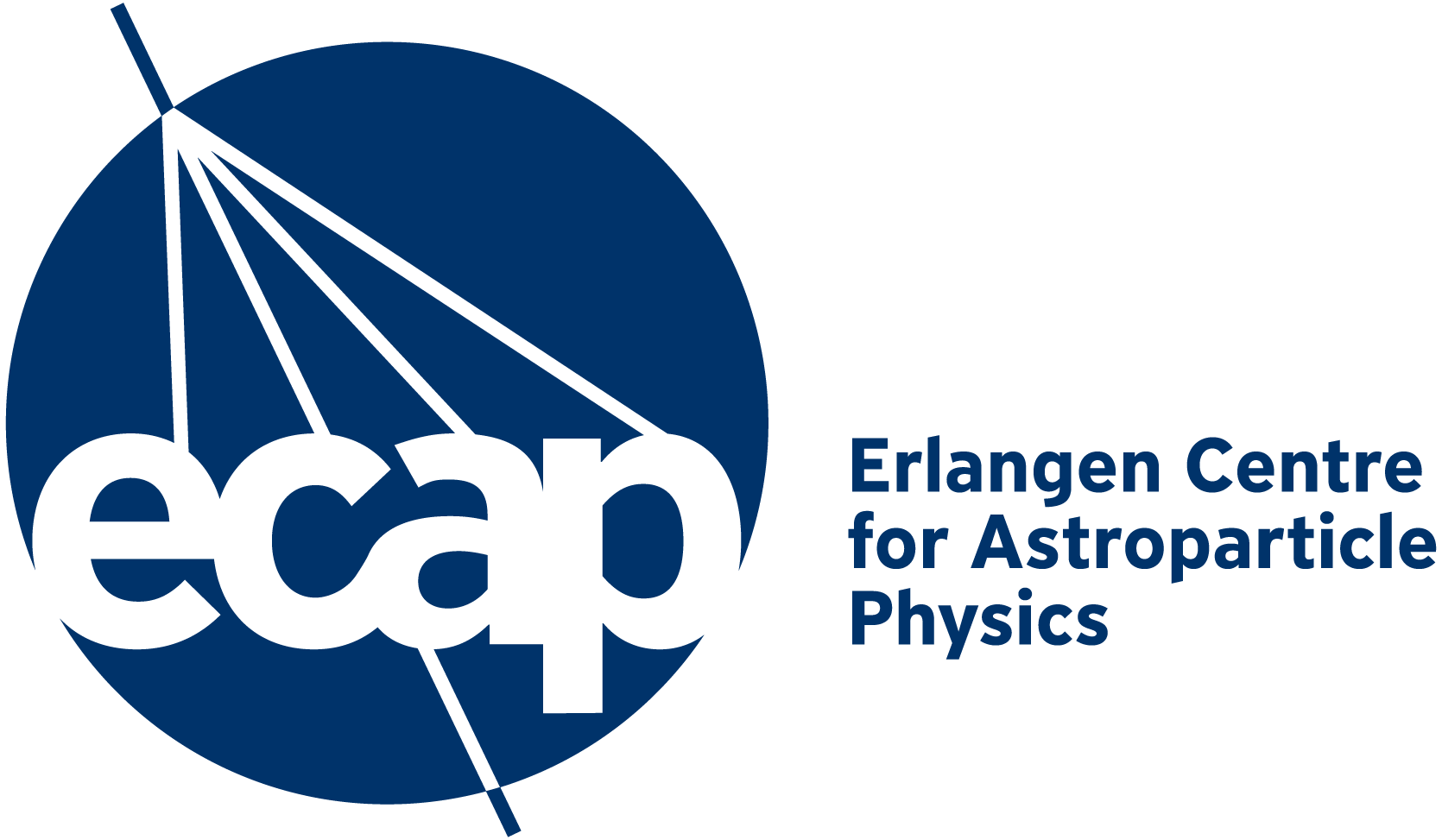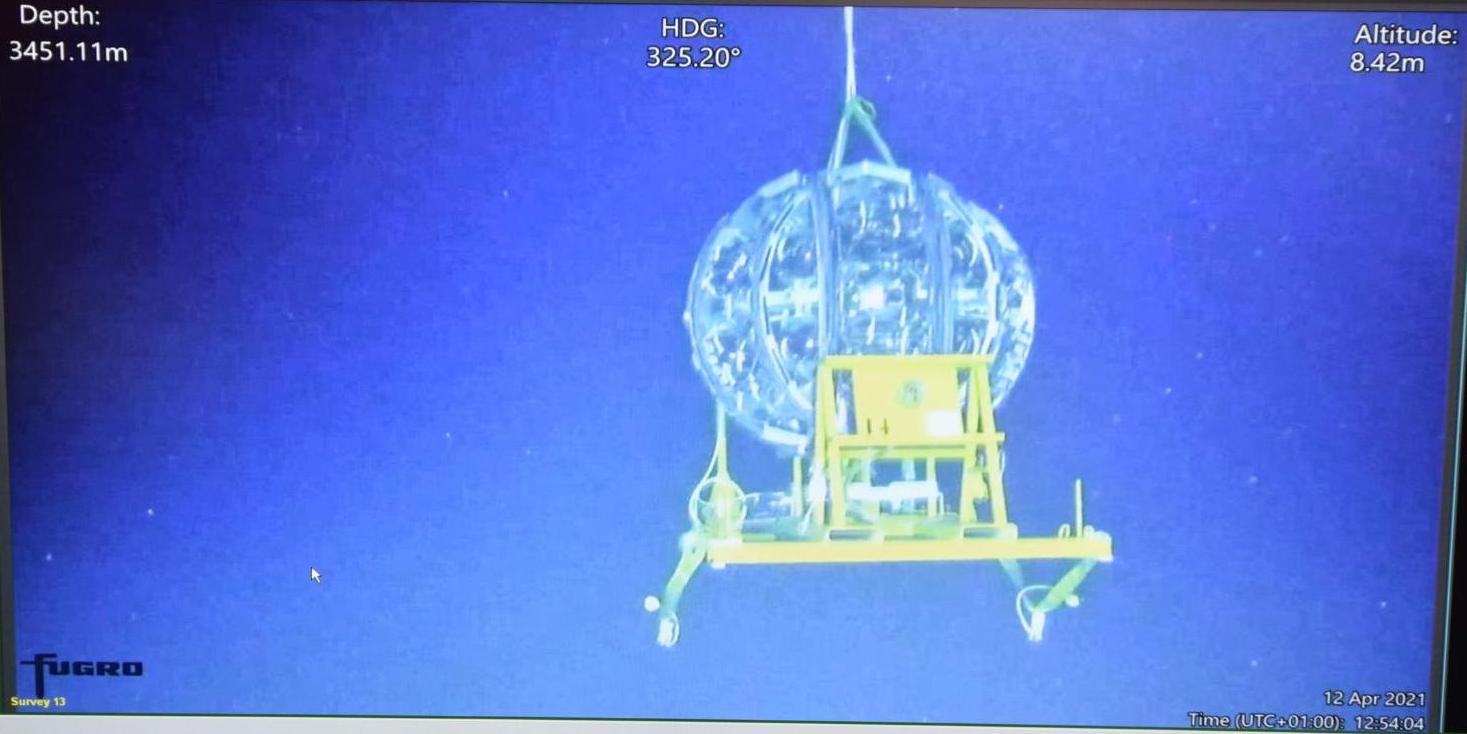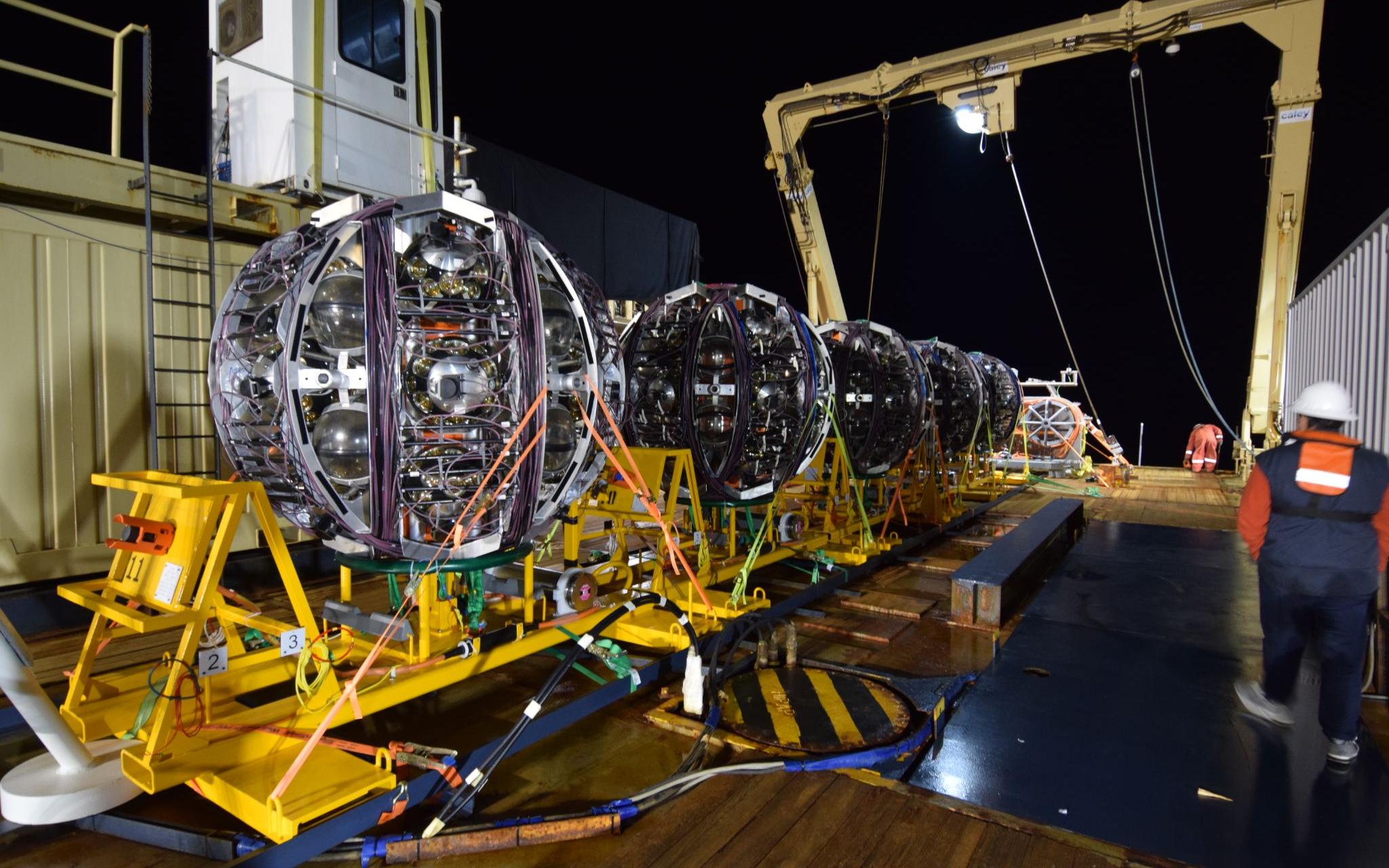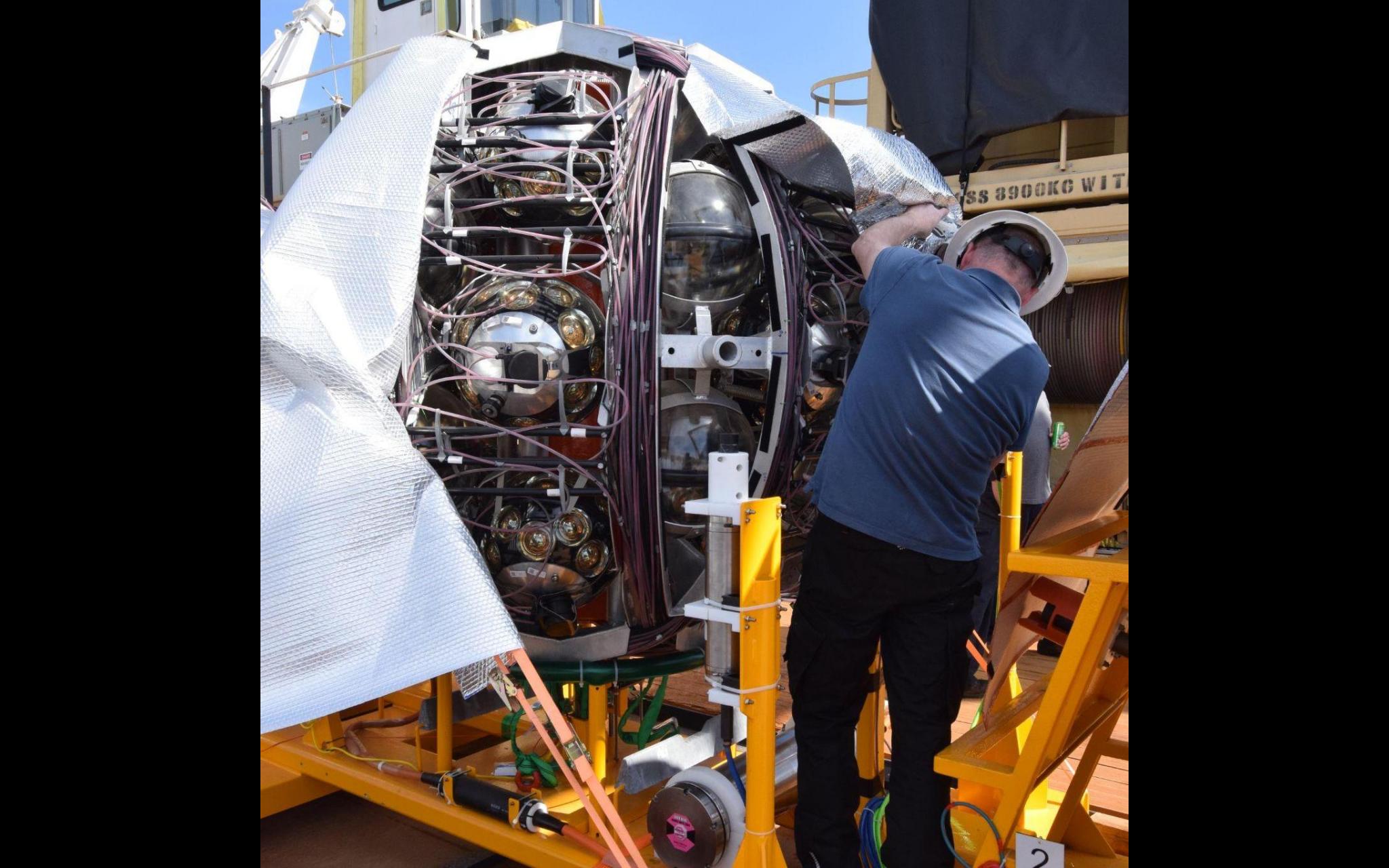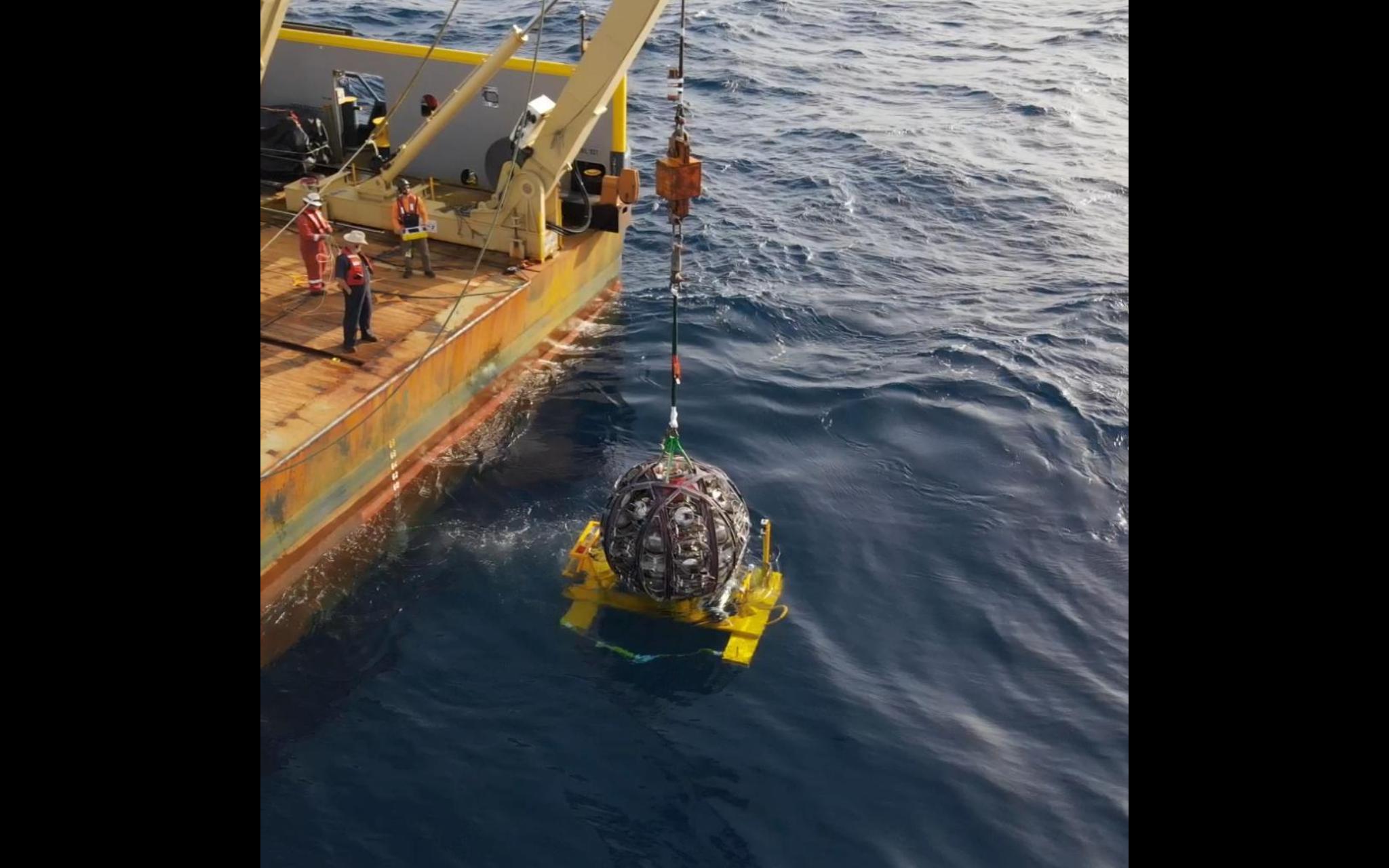Six KM3NeT/ARCA detection units operational in the deep sea
During a week-long sea campaign, 8 — 14 April 2021, the KM3NeT Collaboration upgraded the neutrino telescope KM3NeT/ARCA to six functional detection units. The optical modules for one of the detection units, equipped with ultra-sensitive light sensors, were built at ECAP by Oleg Kalekin and his team. In addition, the seafloor infrastructure for the future cubic-kilometre telescope has been upgraded successfully.
Located in the Mediterranean Sea at a depth of 3500 m, about 80 km offshore Capo Passero, Sicily, the ARCA telescope together with its sister detector ORCA, located offshore Toulon, France, will allow scientists to identify the astrophysical sources of high-energy cosmic neutrinos and to study the fundamental properties of the neutrinos, the most elusive and pervasive of the known elementary particles. The two detectors will also provide unprecedented opportunities for Earth and Sea science studies.
Once complete, the KM3NeT/ARCA detector will form an array of more than two hundred detection units. Each of these 700 m tall structures comprises 18 modules equipped with ultra-sensitive light sensors that register the faint flashes of light generated by neutrino interactions in the pitch-black abyss of the Mediterranean Sea.
During the first part of the sea operation, a new junction box, a hub for the power distribution and data transmission of the detection units, was added to the sea floor infrastructure. The junction box is connected via an electro-optical cable to the recently renovated onshore INFN laboratory located in Portopalo di Capo Passero.
In the second part of the operation, five new KM3NeT detection units were deployed, individually connected by a remotely operated submersible to the junction box and unfurled to their final vertical configuration. As a final step, the first detection unit of the apparatus, which had been deployed as early as 2015, was connected to the new junction box.
In total, six detection units are now in operation, representing the initial core of the KM3NeT/ARCA neutrino telescope. With the six ORCA detection units already taking data, the KM3NeT neutrino observatory has now comparable sensitivity to that of its predecessor, the ANTARES neutrino telescope.
KM3NeT is an international collaboration of over 250 scientists from more than fifty scientific institutes around the World. KM3NeT has been included in the list of high priority projects selected by the European Strategy Forum on Research Infrastructures (ESFRI). Paschal Coyle, Spokesperson of the Collaboration emphasises: “The successful deployment and operation of multiple ARCA detection units is another major step forward for the KM3NeT project. Now it’s full steam ahead with the construction of the hundreds of detection units to be deployed at the French and Italian sites.”
For more information, read the KM3NeT press release or the FAU press release (in German). You can also watch a video of the overboarding of the junction box.
